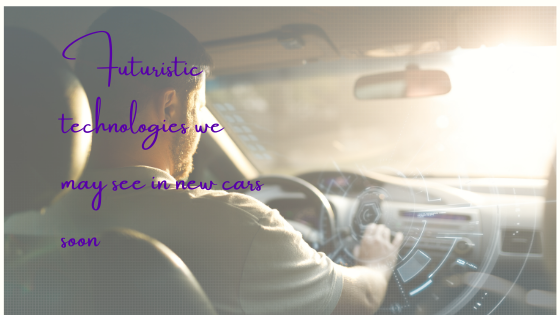Cars used to be mechanical things that allowed people to drive from A to B. And, to be fair, they still are. But they are also becoming engulfed by the digital technology revolution. And that’s allowing all kinds of vast improvements and upgrades.
Therefore, in this post, we take a look at some of the technologies that will be coming down the pike very soon.

Virtual Door Mirrors
For a long time, governments insisted that cars had physical door mirrors. And for a good reason: it allows drivers to pilot their vehicles safely.
But advances in motoring technology mean that they are no longer strictly necessary. Technology exists, for instance, to simply use rear-facing cameras to project images so that the driver can see what’s going on behind them.
For many people, these systems don’t seem strictly necessary. But there are advantages. Not having door mirrors, for instance, reduces drag. It also improves the appearance of the car and eliminates the need to make costly door mirror repairs.
Under-Car Cameras
Door and rear-view mirrors make it easy to see everything around your car. But drivers can rarely see what’s underneath.
That’s where a new generation of under-car cameras is going to come in handy. These clever pieces of technology will slot on the bottom side of the chassis and make it easier for drivers to see things like tall curbs and the outline of parking spaces.
Intelligent Glass
Car blinds are annoying and cumbersome. So much so, that the majority of manufactures no longer include them in their vehicles. However, companies are now developing intelligent glass that will eliminate the problem of glare for good. These panels contain a type of liquid crystal film that increases in opacity as light levels increase. So, the brighter the sunlight, the darker it appears.
Smart Tires
Smart times are becoming a thing too. The idea is to implant them with sensors that can detect things like tread depth and sensors. If tires begin to fall outside of their desired specifications, then sensors will issue an alert to the driver, telling them to change them or stop the vehicle. Click here to find out more.
Turning Assistance
Turning assistance uses radar technology to warn drivers of blind spots. Sometimes, for instance, drivers will turn right at a crossroads and be unaware of cyclists or pedestrians on their inside. This technology effectively expands their field of view, helping to prevent accidents.
Driver Monitoring
Imagine if your car was able to tell if you were tired before you could? It sounds creepy. But thanks to machine learning, the technology already exists. Thus, your car could issue warnings or suggest that you pull over at the next layby for a break.
Lexus and some other brands already offer driver monitoring. However, it is likely to go more mainstream in the future.
Voice Activation
We should have had voice activation in cars years ago. After all, the last thing you want is to have to push buttons on your dashboard to issue your vehicle with commands. And finally, it’s happening, so watch this space.
About the Author
Contributing Author
This article is written by a contributing author.
If you found this post useful, please Pin It!

Hi, before you go…
Don’t forget to join the email list!
Don’t forget to join in on the conversation on social media.![]()
![]()
![]()
![]()
![]()


